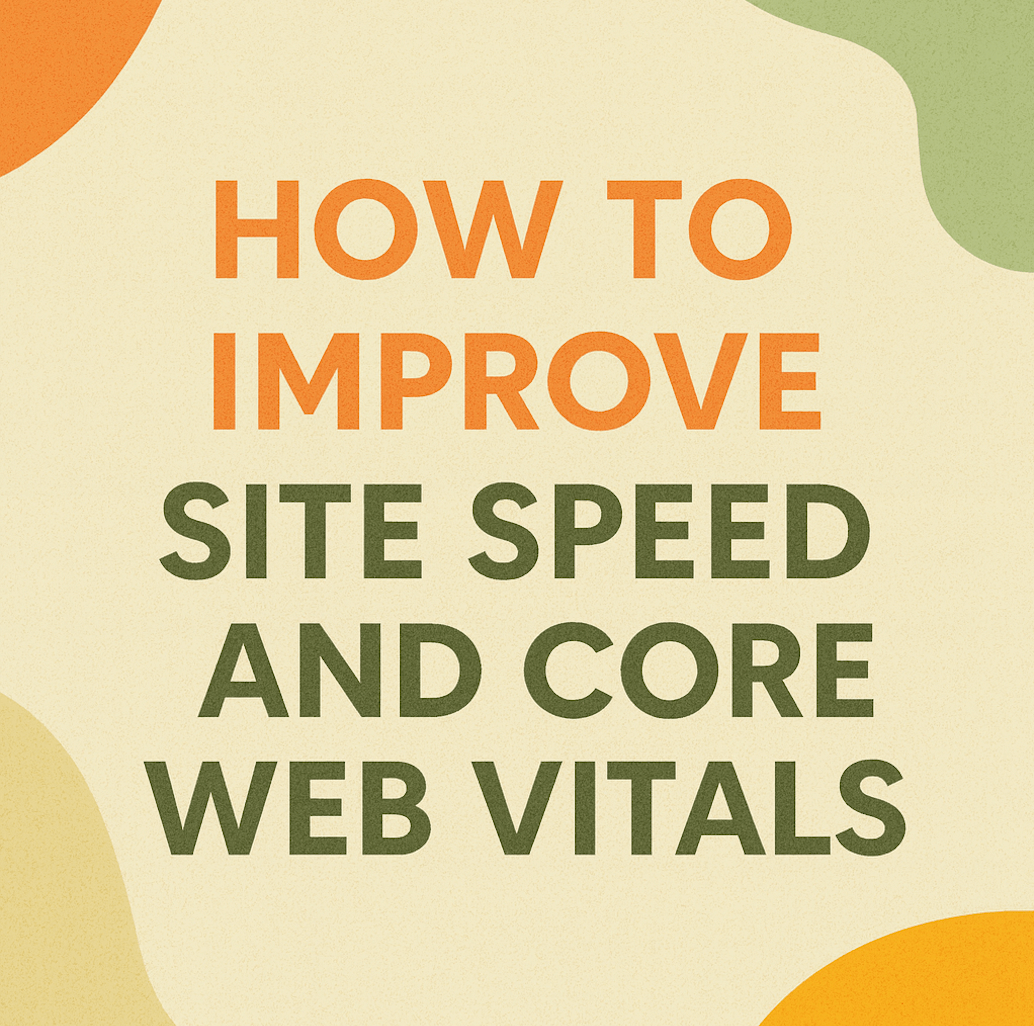How to Improve Site Speed and Core Web Vitals
Background
Site performance defines first impressions. It influences how long visitors stay, how often they return, and how search engines evaluate your credibility. Core Web Vitals—metrics like Largest Contentful Paint (LCP), Interaction to Next Paint (INP), and Cumulative Layout Shift (CLS)—measure real-world user experience. Yet most optimization guides only scratch the surface. To truly differentiate, focus on overlooked performance levers that compound speed and SEO benefits over time.
Eliminate “Dead Weight” in Code and Scripts
Most sites carry unused JavaScript, redundant CSS, and legacy tracking scripts that silently kill speed. Studies show that up to 70% of loaded JS functions go unused on the average webpage. Each excess line increases parsing time, blocking the main thread.
Actions:
Audit script payloads in Chrome DevTools → Coverage tab.
Use tree-shaking and code-splitting to load only what’s needed per page.
Replace heavy third-party scripts (e.g., chat widgets, tracking pixels) with server-side or native alternatives.
Delay non-critical analytics using async/defer attributes or Google Tag Manager triggers.
These cuts improve INP and reduce Total Blocking Time (TBT), especially on mobile devices where CPU overhead matters most
Optimize for Real-World Conditions, Not Lab Scores
Lab results don’t tell the full story. A site that performs well on high-speed broadband can still struggle on mid-tier Android phones or rural LTE networks. Core Web Vitals now measure Interaction to Next Paint (INP) instead of First Input Delay (FID), meaning real responsiveness matters more than synthetic timing.
Focus areas:
Simulate tests on low-end devices using Lighthouse throttling or WebPageTest profiles.
Use adaptive image delivery: serve smaller images or fewer scripts to users on slower connections.
Cache intelligently across edge networks with CDNs that offer real-time routing and HTTP/3 support.
Evaluate hosting not just for uptime but for TTFB consistency under load spikes.
Prioritizing device and network diversity ensures consistent UX and higher Core Web Vital scores globally.
Build a Performance Discipline That Scales
Site speed isn’t a one-time project—it’s a process. Every content update, plugin, or design tweak risks regression. The most resilient teams enforce performance budgets and automate testing directly in their CI/CD pipelines.
Establish a system:
Define thresholds for LCP, INP, CLS, page weight, and request count.
Run Lighthouse CI or WebPageTest API in pull requests to catch slowdowns early.
Visualize Web Vitals data in GA4 or Looker Studio for stakeholder tracking.
Review scripts, media, and CSS quarterly to prevent gradual bloat.
Treating performance as an ongoing KPI—not a fix—keeps your site lean, scalable, and SEO-competitive in a field where most competitors settle for “good enough.”
Frequently Asked Questions
-
Third-party tools like chat widgets, analytics trackers, and social embeds can slow websites dramatically if not optimized. Each external script adds network requests and execution time that block other resources from loading. Tools like Google Tag Manager and asynchronous script loading can help control this impact by delaying non-essential scripts until after the main content loads. Regularly auditing scripts and removing unused integrations keeps your site fast. Where possible, replace heavy third-party dependencies with native browser features or lighter alternatives. Monitoring request waterfalls in Lighthouse or WebPageTest reveals which plugins are hurting performance the most.
-
Your hosting provider directly affects load times and Core Web Vitals performance. Shared servers or outdated configurations can cause long Time to First Byte (TTFB) and inconsistent responsiveness under traffic. Upgrading to managed or cloud hosting with content caching, HTTP/2, and SSD storage improves response time across all visitors. Some hosts even include built-in CDN support or image optimization, removing the need for third-party tools. For global sites, choosing regional data centers closest to your users minimizes latency. A strong hosting foundation supports all other optimization efforts.
-
Images account for most of a website’s weight. Using next-gen formats like WebP or AVIF reduces file size by up to 40% without visible quality loss, directly improving load speed and Core Web Vitals. Compression and lazy loading ensure large visuals don’t block above-the-fold rendering. Google’s crawlers favor sites that balance image quality with performance efficiency because faster visuals improve both user engagement and ranking potential. Periodically running images through tools like Squoosh or TinyPNG keeps your media optimized as new pages are published.
-
Continuous content and feature updates often degrade performance over time if unchecked. Developers should integrate automated testing for Core Web Vitals into their deployment workflow. Tools like Lighthouse CI or WebPageTest API can flag regressions before code goes live. Maintaining a performance budget helps teams set limits on page weight, request count, or script size. Version control combined with performance reporting ensures that every update maintains speed targets. This proactive approach keeps the site consistent even as design, features, and content evolve.
-
Yes. Accessibility and performance often align. Clean, semantic HTML reduces code bloat and helps browsers render faster. Proper heading structure, alt text, and ARIA labels not only improve usability but also limit excessive scripting required for interaction. Avoiding hidden text layers or large background images speeds up page rendering while benefiting screen readers. When accessibility best practices are combined with optimization—like deferring decorative animations or compressing media—users with all connection types experience faster, smoother browsing that improves both SEO and inclusivity.




